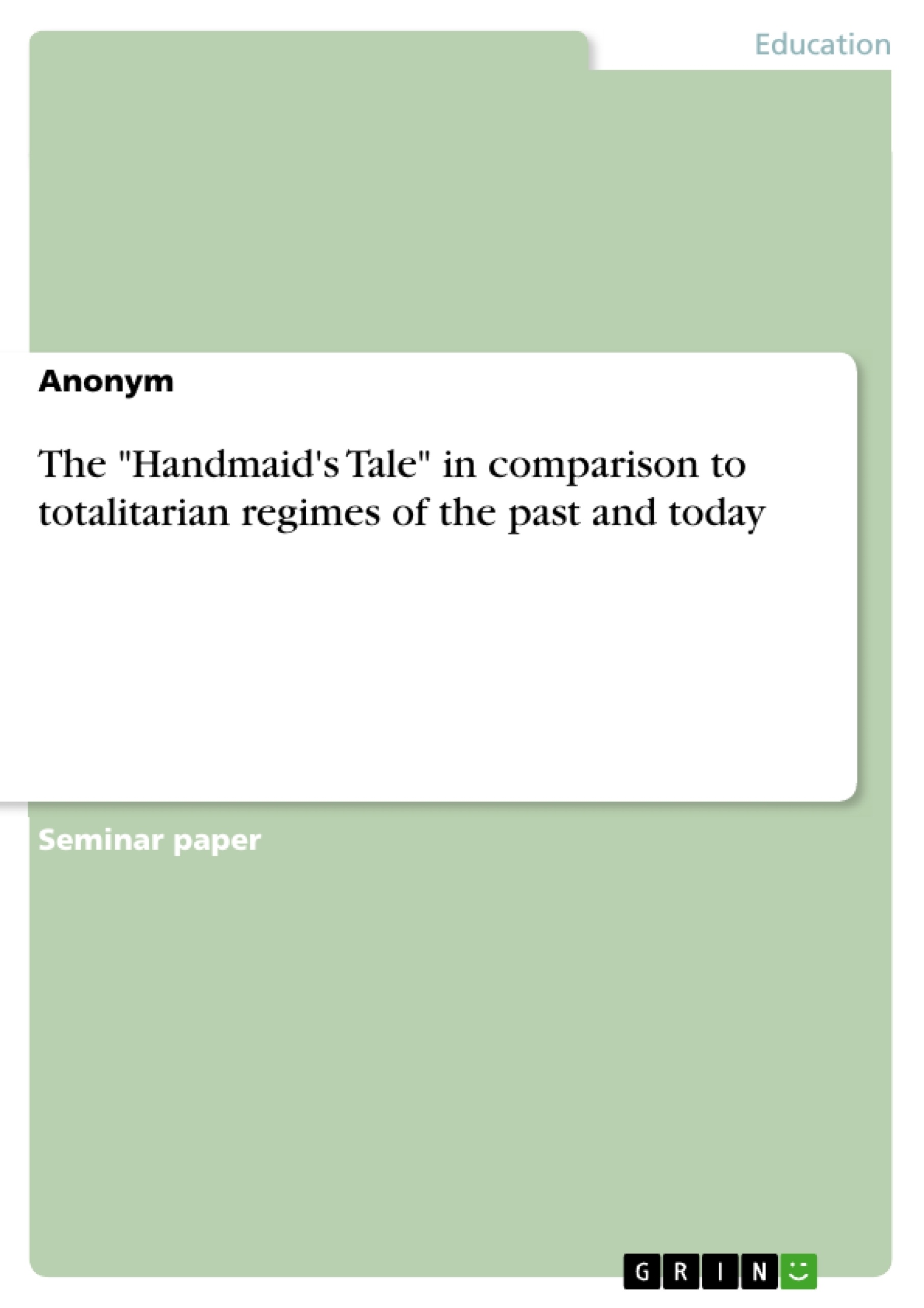The aim of this document is to give an overview of "The Handmaids Tale" by Margaret Atwood and to compare Gilead with historic and present totalitarian regimes. The first section is to provide information about the author and her inspiration for the book. Then a plot summary and a characterization of two of the main characters will be made. Subsequent to that, the narrative perspective and the setting will shortly be examined next to the significance of clothing and nomenclature. Finally, comparisons to history and present totalitarian regimes will be made.
"You just raped every woman who’s been raped by a man. You just raped her all over again. This is just a shame, this is a disgrace, this is a travesty" (Filipovic, 2019). This statement was made by Alabama Senate Minority Leader Bobby Singleton during a fierce debate on America’s most stringent anti-abortion law.
In May 2019 the Alabama Senate voted for a regulation that outlaws almost all kinds of abortion. It is in stark contrast to the ruling of the Supreme Court from 1973 which had recognized a woman’s constitutional right to end her pregnancy. The new Alabama law, however, bans and criminalizes abortion at every stage of pregnancy. It charges doctors with felonies and prison sentences of up to 99 years. Furthermore, there is no exclusion for cases of rape or incest - meaning that even if a woman gets abused and impregnated against her will, she is forced to give birth to that child. It is noteworthy that the Alabama Senate consists of 31 men and only four women.
Inhaltsverzeichnis (Table of Contents)
- Introduction
- Author
- Biography
- Inspiration for the Book
- Awards & Recognitions
- Plot Summary
- Narrative Perspective and Setting
- Characterization
- Offred
- Moira
- Symbols
- Significance of Clothing
- Significance of Nomenclature
- Comparison to totalitarian Regimes of the past and today
- Ending
Zielsetzung und Themenschwerpunkte (Objectives and Key Themes)
This paper aims to analyze Margaret Atwood's dystopian novel "The Handmaid's Tale" and compare the totalitarian regime of Gilead to historical and present-day totalitarian regimes. The paper will explore the author's biography, inspiration for the book, plot summary, characterization of key figures, and symbolism. It will also examine the narrative perspective and setting before comparing Gilead's social and political structures to real-world examples.
- The dangers of totalitarianism and its impact on individual liberties
- The power dynamics between genders and the oppression of women
- The use of religious ideology to justify political control
- The importance of memory and resistance in the face of oppression
- The role of literature in providing social commentary and warning against societal decay
Zusammenfassung der Kapitel (Chapter Summaries)
- Introduction: This chapter introduces the novel "The Handmaid's Tale" and its relevance to the present day, drawing a parallel between the strict abortion laws in Alabama and the fictional regime of Gilead.
- Author: This section delves into Margaret Atwood's biography, highlighting her background, educational journey, and extensive literary career. It explores her early influences, particularly the dystopian works of Orwell, Huxley, and Bradbury. It also emphasizes her research on the Puritan period, which informs the historical context of Gilead.
- Plot Summary: This chapter provides a brief overview of the novel's setting, introducing the reader to the Handmaid, Offred, and her life within the oppressive society of Gilead.
- Narrative Perspective and Setting: This section examines the narrative perspective and setting of the novel. It explores how the story is told from Offred's point of view and how the setting of Gilead contributes to the oppressive atmosphere.
- Characterization: This chapter delves into the characteristics of two main characters, Offred and Moira, highlighting their distinct personalities and experiences within the Gilead regime.
- Symbols: This section explores the symbolic significance of clothing and nomenclature in Gilead, illustrating how these elements are used to reinforce the regime's power and control.
Schlüsselwörter (Keywords)
The main keywords and focus topics of this work include: dystopian literature, totalitarian regimes, gender oppression, feminist literature, historical parallels, social control, reproductive rights, narrative perspective, symbolism, and resistance.
- Quote paper
- Anonym (Author), 2019, The "Handmaid's Tale" in comparison to totalitarian regimes of the past and today, Munich, GRIN Verlag, https://www.grin.com/document/536612




